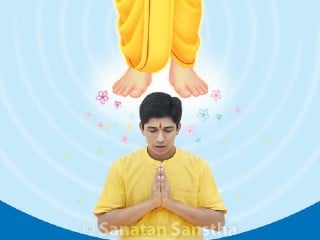
Expressed bhav (Spiritual emotion) means bhav gets awakened in us and manifests in the form of an emotion, thought or action. Bhav gets expressed in eight modes such as becoming still, sweating, goose-flesh, choking of voice, tremors, paleness of complexion, tears or fainting.
When bhav is activated within us; however, it does not manifest with an emotion, thought or action. It exists within the subconscious mind. This is called unexpressed bhav.
1. Efforts required to develop expressed bhav
- Puja (Ritualistic worship), Arati, rites, Namaskar and other such pious acts.
- Prayer : Through prayer a devotee expresses his inability and offers doer-ship to God.
- Gratitude : Another meaning of ‘prayer’ is surrender, and the process of surrender remains incomplete without expressing gratitude; hence, after every action we should express gratitude.
- Chanting : A simple way to remain in constant communion with God is to continuously chant His Name.
- Speaking to God intermittently : Many incidents in day-today life create thoughts, reactions, situations etc. which we can narrate to God. Having the bhav that ‘God, You are my mother and father, You are everything to me’, if we tell God everything, then love for God increases and so does bhav for Him.
Given ahead are some examples of how to speak to God –
A. While cooking, say to God, ‘O God ! I am preparing this Naivedya (Food offered to the Deity in ritualistic worship) for You. Please guide me on how to prepare it so that You like it.’
B. While studying, say to God, ‘O God ! I am studying but my mind is getting diverted. Please make me aware whenever this happens !’
C. In your office (at your workplace), if you feel angry while speaking to someone with personality defects, say to God, ‘O God ! I am losing my temper with this man. Please teach me how to speak to him and get it done from me’.
2. Features of expressed and unexpressed bhav
A. When performing any action Anand (Bliss)
is obtained very easily due to unexpressed bhav
Bhav cannot be expressed at all times. That is why, Anand obtained by a seeker who has expressed bhav is limited. As against this, unexpressed bhav can last longer; hence, a seeker who has this type of bhav can obtain Anand easily when performing any action. This is precisely why, unexpressed bhav is of greater importance than expressed bhav.
B. Sagun (Materialised) and nirgun (Non-materialised) worship of God
generate manifest (Expressed) and unmanifest (Unexpressed) bhav respectively
‘Sagun worship generates manifest (Expressed) bhav. When the seeker has greater faith in the capacity of God to carry out tasks in the subtle, he begins to worship nirgun God and unexpressed bhav develops in him. Due to expressed bhav for God, the seeker gets entangled in the sagun form of God. On the other hand, unexpressed bhav leads a seeker to the formless nature of God, that is, nirgun.
C. Depending upon expressed and unexpressed bhav, Chaitanya
(Divine consciousness) is absorbed and emitted by the physical and subtle bodies
Depending upon the expressed bhav in a seeker, his physical body absorbs and emits Chaitanya; while at the level of unexpressed bhav, the subtle-body absorbs and emits it.
D. Output and effectiveness of a seeker performing samashti sadhana is greater
A jiva performing vyashṭi sadhana (Individual spiritual practice) mostly does so with expressed bhav, that is, through sagun urja (Energy), while the one performing samashṭi sadhana (Spiritual practice for spread of Spirituality) does it through unexpressed bhav, that is, through nirgun urja. Hence, even if the spiritual level of a jiva performing samashṭi sadhana is low, its output and effectiveness are greater than a jiva performing vyashṭi sadhana.
E. Unexpressed bhav is superior to the expressed bhav, because when
bhav is expressed, energy from the kunḍalini is wasted in expressing it,
and since this lasts for only some time, it is not of much use in increasing bhav
The kunḍalini gets awakened along with bhav. Energy from it is utilised to awaken bhav. This energy is not used for increasing sadhana. Besides, since expressed bhav is short-lasting (for a few seconds), it is not of much use in increasing bhav. This is precisely why, unexpressed bhav (that is permanent) is superior to expressed bhav.
3. Moving from expressed bhav to unexpressed bhav
A. Stages of spiritual evolution, expressed & unexpressed bhav
Expressed bhav means duality with God, while unexpressed bhav means non-duality with Him. A seeker should gradually move towards unexpressed bhav.
- When the bhav of a seeker in the primary stage gets awakened, he gets a spiritual experience.
- In the next stage, since the bhav of a seeker gets awakened continuously, his bhav gets expressed sometimes through chanting and at other times through light visible to him.
- In the further stage, the same bhav manifests through the breath and the seeker’s attention gets concentrated on his breath.
- Further, the seeker moves from expressed to unexpressed bhav. At that time, his bhav is neither expressed through chanting nor breath nor anything else and gradually the extent of his spiritual experiences start reducing.
B. Going from expressed to unexpressed
bhav means going from duality to non-duality
The more wholeheartedly a seeker chants and performs seva, the more introverted his attitude becomes. His sadhana takes place subtly and he is drawn from the sagun to the nirgun state of God. His journey is from duality to non-duality and the expressed bhav in him gets transformed into unexpressed bhav.
C. Stages in the journey from sagun to
nirgun, that is, from expressed to unexpressed bhav
Visions of stars, fireflies, dots and flames; the Guru within a flame; a flame in the body of the Guru or a flame moving from the body of the Guru to ours – all these are stages of moving from expressed to unexpressed bhav.
4. Some factors essential for the creation of unexpressed bhav
- Intense yearning to participate in the mission of the Guru : Serving the physical body of the Guru is called sagun seva, while participating in His samashṭi (For the welfare of society) mission of Dharma (Righteousness) for society is His nirgun seva. Due to the yearning to serve the nirgun, unexpressed bhav is generated in us.
- Try to perform every task to perfection. Performing an action skilfully to perfection itself is Yoga (Union with God); it is a sadhana. When you try to perform every action (and not only seva) to perfection, unexpressed bhav develops faster.
- When we perform any task we see in the best possible way without any expectation based on the quote – ‘Whatever we see is our duty’ – then unexpressed bhav develops in us.
- Efforts of the subconscious mind to perform sadhana : The mind, intellect and ego getting sacrificed unconsciously while performing sadhana means that the sadhana is taking place in the subconscious mind.

 Vyashti and samashti bhav
Vyashti and samashti bhav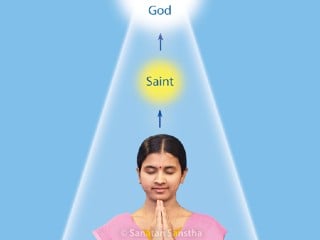 Why is it essential for yearning and bhav to be linked for rapid spiritual progress?
Why is it essential for yearning and bhav to be linked for rapid spiritual progress?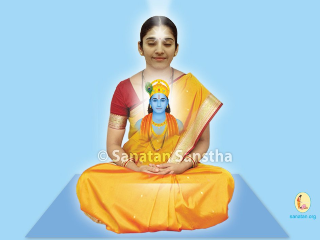 Efforts to be undertaken to awaken bhav
Efforts to be undertaken to awaken bhav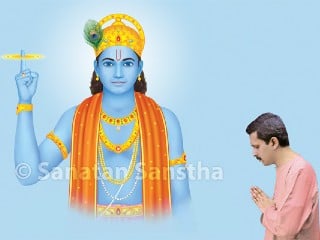 Why is Sharanagatbhav superior to Krutadnyatabhav?
Why is Sharanagatbhav superior to Krutadnyatabhav?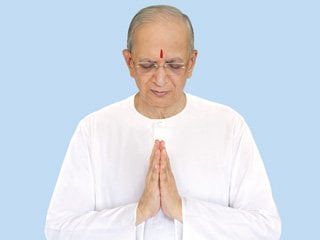 Importance of awakening bhav
Importance of awakening bhav